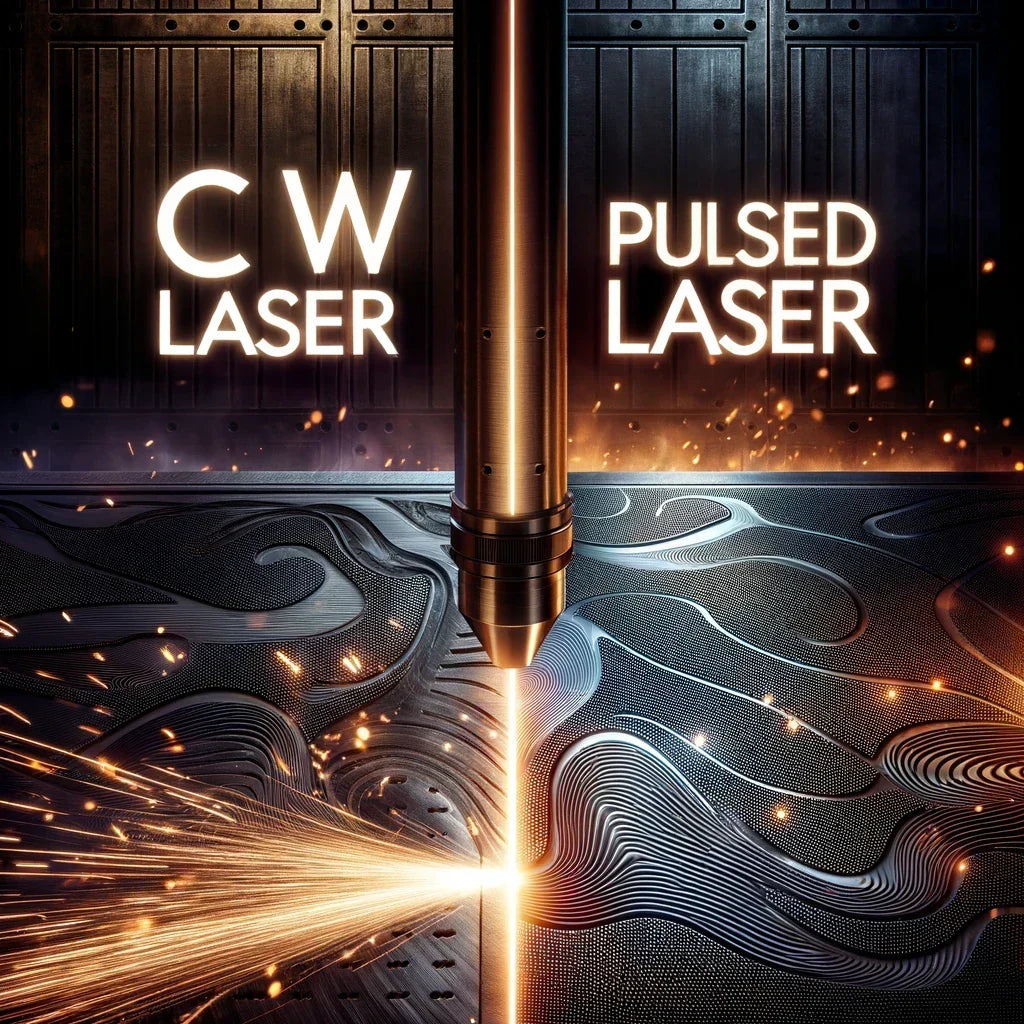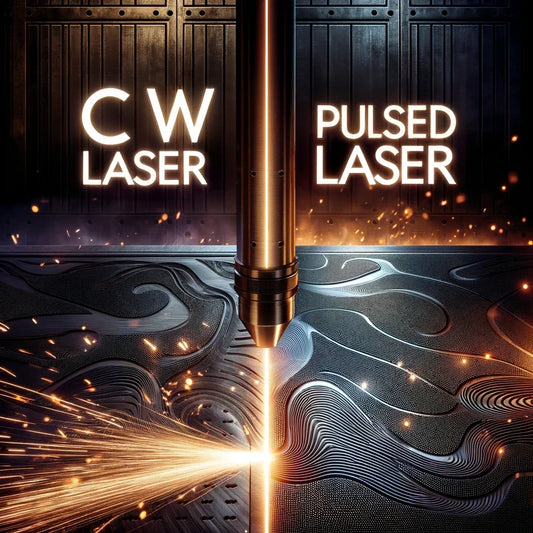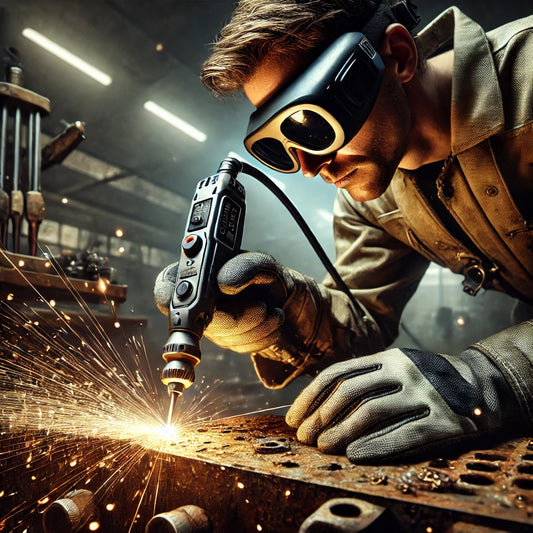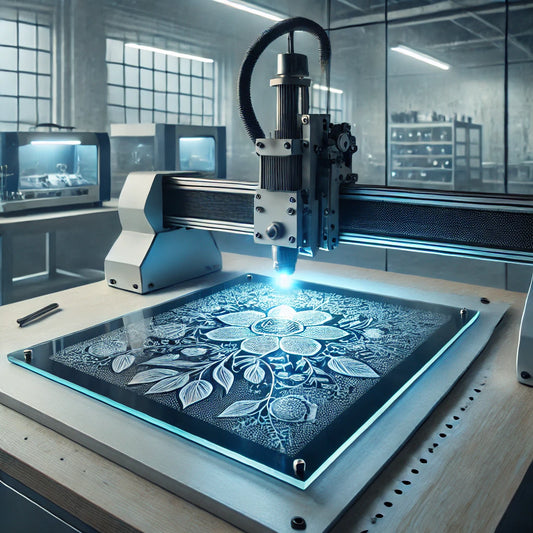
Continuous Wave Laser vs Pulsed Laser
When it comes to laser technology, precision and power often depend on choosing the right tool for the job. But what happens when you’re faced with the choice between Continuous Wave and Pulsed Lasers?
These two laser types operate on fundamentally different principles, each excelling in specific applications. From cutting and welding thick metals to engraving intricate designs on delicate surfaces, the right laser can make all the difference. In this article, we’ll dive into the technologies behind Continuous Wave (CW) and Pulsed Lasers, explore their unique features, and uncover the best applications for each. Whether you're a manufacturer, scientist, or DIY enthusiast, this guide will help you make an informed decision for your next project.
What is a Continuous Wave (CW) Laser?
A Continuous Wave (CW) Laser emits a steady, uninterrupted stream of light energy, delivering consistent power output over time. Unlike pulsed lasers that emit energy in bursts, CW lasers maintain a constant beam, making them ideal for applications that require sustained energy for cutting, welding, or heating.
How Does CW Laser Work?
Continuous Wave lasers operate by continuously exciting the gain medium (such as gas, crystal, or fiber) with an energy source, creating a stable flow of photons that form a laser beam. This uninterrupted energy output allows the laser to maintain a uniform intensity, essential for processes that demand consistent heat input or beam stability.
Key Features of CW Lasers
- Stable Beam Intensity: The laser output remains steady, ensuring predictable performance in applications like welding and material processing.
- Longer Exposure Times: The continuous nature of CW lasers enables prolonged interaction with materials, ideal for tasks requiring deep penetration or large-area treatment.
- Higher Heat Generation: Due to the constant energy delivery, CW lasers generate more heat over time, making them effective for melting or joining thick materials.
Continuous Wave Laser Types
- Fiber Lasers: Highly efficient and versatile, widely used in industrial cutting, welding, and marking applications.
- CO₂ Lasers: Ideal for non-metallic materials like wood, plastic, and glass, commonly used in engraving and cutting.
- Semiconductor Lasers: Compact and energy-efficient, used in optical communication, medical applications, and small-scale material processing.
CW lasers are the go-to choice for tasks that require continuous energy delivery and a uniform beam profile. Their ability to provide steady, high-power output makes them indispensable in industries ranging from manufacturing to medical technology.
What is a Pulsed Laser?
A Pulsed Laser emits energy in short bursts or pulses, delivering extremely high peak power for brief periods. Unlike Continuous Wave lasers, which produce a steady beam, pulsed lasers are designed to release intense energy in controlled intervals, making them ideal for applications requiring precision and minimal heat impact.
How Does a Pulsed Laser Work?
Pulsed lasers operate by modulating the energy delivery through specialized techniques like:
- Q-Switching: Temporarily storing energy in the gain medium and releasing it in a powerful pulse.
- Mode-Locking: Generating ultra-short pulses by synchronizing multiple laser modes.
- Gain-Switching: Using rapid changes in gain to produce laser pulses.
These techniques allow pulsed lasers to achieve high peak power while maintaining a low average power output, ensuring precision and controlled interaction with the material.
Key Features of Pulsed Lasers
- High Peak Power with Low Average Power: Each pulse delivers a concentrated burst of energy, capable of vaporizing or ablating material with minimal overall energy use.
- Precision Due to Short Pulse Durations: Pulses lasting nanoseconds, picoseconds, or femtoseconds enable micromachining and intricate detail work.
- Minimal Heat-Affected Zones: The short interaction time minimizes heat transfer to surrounding areas, preserving material integrity and reducing thermal damage.
Pulsed Laser Types
- Nanosecond, Picosecond, and Femtosecond Lasers: Ultra-short pulse durations tailored for applications like micromachining, laser surgery, and time-resolved spectroscopy.
- Pulsed Fiber Lasers: Known for efficiency and versatility, used in marking, engraving, and rust removal.
- Pulsed Solid-State Lasers: Ideal for industrial and scientific applications, including drilling, cutting, and material processing.
Pulsed lasers are the perfect choice for tasks requiring extreme precision and minimal heat impact. Their ability to deliver concentrated bursts of energy makes them indispensable in industries like electronics, medical technology, and material science.
Technological Differences of CW and Pulsed Lasers
When comparing Continuous Wave (CW) lasers and Pulsed lasers, the underlying technological differences greatly impact their performance and suitability for various applications. Below is a detailed breakdown of the differences.
| Aspect | Continuous Wave (CW) Laser | Pulsed Laser |
|---|---|---|
| Power Delivery | Continuous power output | Intermittent bursts with adjustable frequencies and durations |
| Beam Intensity and Focus | Uniform intensity | High-intensity peaks during pulses |
| Heat Management | Larger heat-affected zones | Minimal heat-affected zones |
| Efficiency | Energy-efficient for sustained applications | Efficient for precision tasks |
Materials Compatible with CW and Pulsed Lasers
Both Continuous Wave (CW) and Pulsed lasers excel in working with various materials, but their performance depends on the material's properties and the desired application. Below is a detailed comparison:
| Material | Continuous Wave (CW) Laser | Pulsed Laser |
|---|---|---|
| Metals | Thick material cutting and welding | Precision marking and engraving |
| Plastics | Welding and cutting | High-contrast marking |
| Wood | Risk of burning | Precision engraving |
| Glass | Limited due to heat stress | Minimal stress marking |
| Concrete and Stone | Surface-level treatment | Micro-engraving and cleaning |
Choosing the Right Laser for Your Application
Selecting the appropriate laser - Continuous Wave (CW) or Pulsed - depends on your specific needs and application requirements. Understanding the factors at play can help ensure optimal results.
Factors to Consider
Material Type and Thickness:
- CW lasers are ideal for thicker materials and applications requiring sustained energy.
- Pulsed lasers excel in delicate or intricate tasks on thinner or heat-sensitive materials.
Precision Requirements:
- Pulsed lasers provide unmatched precision due to their short, high-intensity pulses.
- CW lasers are suitable for processes where precision is less critical, such as welding and cutting large areas.
Speed and Scale of the Operation:
- CW lasers offer higher throughput for large-scale industrial applications.
- Pulsed lasers are better for detailed, small-scale projects.
Heat Sensitivity of the Material:
- Pulsed lasers minimize heat-affected zones, preserving the integrity of delicate materials.
- CW lasers may cause significant heat buildup, better suited for robust materials.
| Application | Continuous Wave (CW) Laser | Pulsed Laser |
|---|---|---|
| Thick Metal Cutting | Highly effective for sustained cutting | Not suitable |
| Thin Metal Marking | Limited precision | Ideal for high-contrast and detailed marking |
| Plastic Welding | Efficient for joining parts | Less suitable |
| Glass Engraving | Not suitable due to heat stress | Perfect for minimal stress marking |
| Wood Engraving | Risk of burning or charring | Ideal for precision designs |
| Concrete Surface Cleaning | Limited to surface treatment | Highly effective for micro-cleaning and fine detailing |
When choosing between CW and Pulsed lasers, it’s essential to align your choice with the specific material, precision requirements, and operational scale of your project. Use the recommendation table as a quick reference to make informed decisions tailored to your application.



